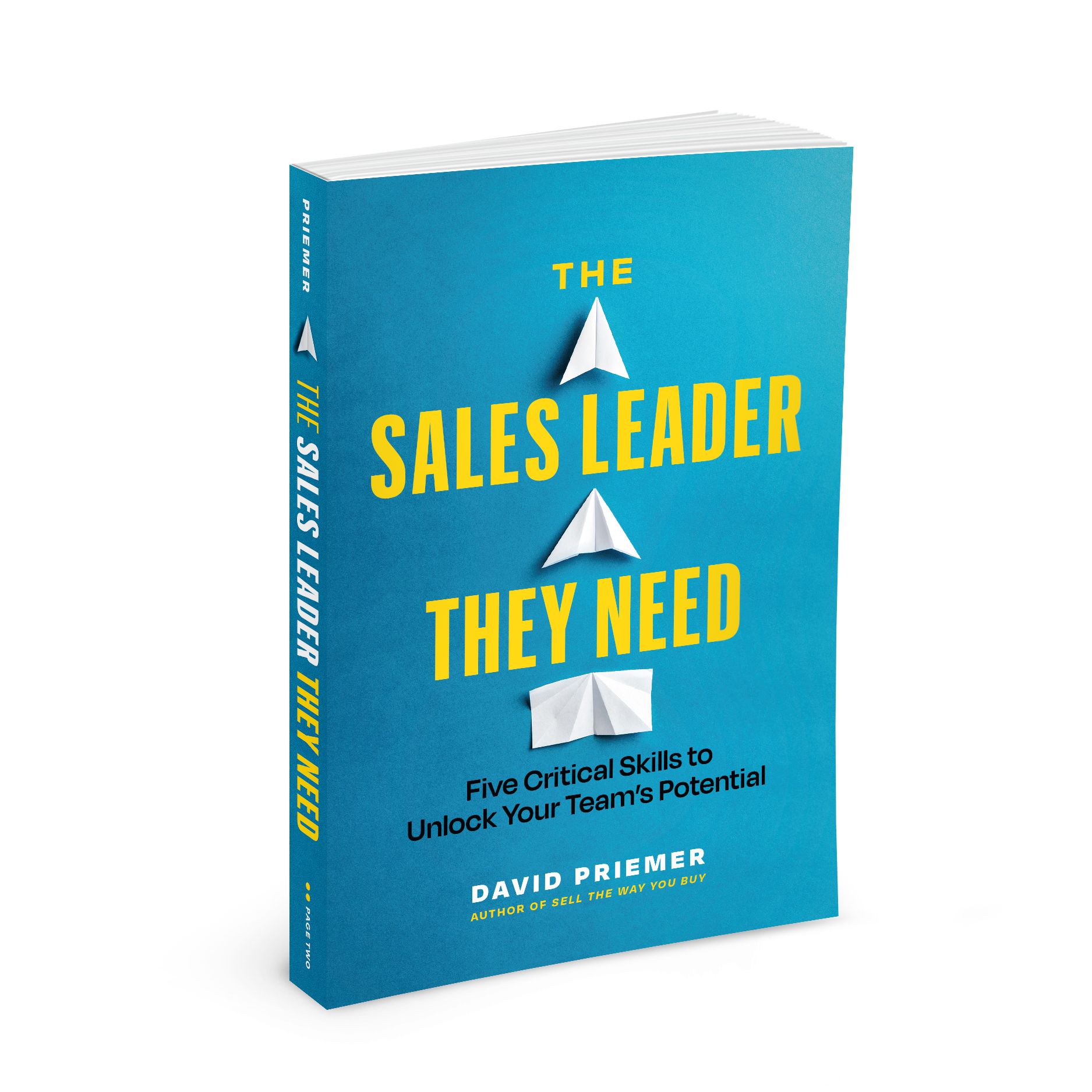3 Jedi Mind Tricks Guaranteed to Boost Your Sales Efforts
Think back to the last time you stayed in a hotel. Did you notice a little card on the bathroom counter or towel rack? You know, the one where the hotel preys on your sense of environmental responsibility in an effort to get you to reuse your towels instead of sending them to the laundry. Ever think about why you did or didn’t choose to comply with their request? In Sell The Way You Buy I reference an experiment where researchers found that they could get 45% more people to reuse their towels by simply tweaking the verbiage on those cards. Author, Simon Sinek, conducted a similar experiment, changing the words on a New York panhandler’s sign, in turn increasing its impact five-fold!
As it turns out, the art of persuasion isn’t strictly reserved for clever Jedi, looking to elude droid-seeking Storm Troopers. Words and concepts when used in just the right way are more powerful than we think. And in a world full of distractions and conflicting priorities where competing for our customer’s attention has never been harder, mastering some of these tactics is critical for modern sales professionals.
Here are three scientifically proven persuasive tactics that both the strong and weak-willed will be powerless to resist!
1. The ONE word that will crush your customer’s objections!
Certain words and phrases simply have magical powers. The word because is one of them. In a sentence, a conjunctive because triggers the listener’s brain to say, “Oh, the thing I’m going to hear after this word will be a justification for the thing I heard before it,” and the magical way this word works can be a formidable ally in your objection handling efforts!
For example, in the bestselling book Yes! 50 Scientifically Proven Ways to Be Persuasive (one of my top sales reads) the authors reference a study led by behavioral scientist Ellen Langer where people making photocopies were asked by the stranger next in line if they could go ahead of them. When asked simply if they could use the photocopier (i.e. “Excuse me, I have 5 pages. May I use the machine?”) 60% of people complied with the request. However, when a reason was given using the word because (i.e. “May I use the photocopier because I’m in a rush”), compliance skyrocketed to 94%. What’s more amazing, even when the reason provided was poor (i.e. “May I use the photocopier because I need to make copies” — duh!), compliance remained at about the same level, 93%.
So the next time you need to justify your price, defend a company policy, or position your solution against a competitor’s, summoning the word because might just be the mind trick you need!
2. Invoke the influence of reciprocity
Reciprocity is one of the oldest and most powerful forces in business. It’s an incentive-based behavioral equation; I want something from you and in exchange, I offer something in return. For example, I want my kids to brush their teeth and go to bed on time without a fuss, and in exchange, I may offer extended TV time the next day. Simple, right? Well as it turns out, the order of operation here is more important than we think!
In the earlier example of hotel towel reuse, the researchers hoped to promote guest compliance by offering to donate a portion of the energy savings to a not-for-profit environmental protection organization. A “You do this for me, I’ll do that for you” proposition similar to my children’s bedtime routine. Interestingly, this incentive resulted in no additional degree of compliance with the request. However, when the researchers reversed the order of the incentive by stating that they had already donated a portion of the anticipated savings to the not-for-profit environmental protection organization, the degree of cooperation increased by 45%!
What this means in a business context is that as sales professionals we should be focused on adding value to our customers at every interaction in advance of any ask. For example, instead of pinging your prospects with the all too familiar “Just checking in,” emails or phone calls, why not send them a third-party article, study, or business book you feel they’d enjoy? (i.e. the “just thinking of you” approach). Or how about making an introduction to a like-minded customer or third-party expert who can help them in their role? There are dozens of things you can do to add value to that customer and build reciprocity, but the key is whatever you do, it has to be no strings attached. While you hope that one day the other party will reciprocate the favor (i.e. give you access to their business or ultimately make a purchase), your gesture needs to stand alone as a value-added experience whether they do or not.
Bonus prospecting tip – How to Use Reciprocity to Increase Response Rates
3. Deliver your message with conviction!
Conviction is a powerful force in the science of persuasion. Toastmasters international speaker, Mohammed Qahtani, masterfully employed this tactic in his World Championship winning talk, The Power of Words. In it he asserts how “words when said and articulated in the right way can change someone’s mind, they can alter someone’s belief” (and uses a clever little example to prove it). Still, while the power of conviction may be well understood and very powerful in a sales context, summoning it isn’t automatic.
In the hit sitcom, Seinfeld, George Costanza teaches Jerry to defeat a lie detector by invoking the convictive mantra, “It’s not a lie if you believe it.” For most of us though, operating with fake conviction is as detrimentally transparent as a squeaky-voiced minor with a fake I.D. trying to buy beer at a liquor store. Conviction needs to reside within you and stem from real-world mastery and personal experience. The good news is that while belief and experience are the quickest roads to conviction, much like excitement, credibility, and lightsaber skills, conviction can be transferred.
Customer stories and data like usage metrics or industry statistics can all fuel your team’s conviction on a particular topic. Leading with what you believe is also a surefire way to instantly manifest massive amounts of conviction, as is picking an enemy for your product or service. In fact, taking a polarizing position against a generally accepted practice or status-quo state that your solution addresses can generate almost instantaneous conviction in your customer interactions. Regardless of the strategy, the key to delivering your message with compelling gusto is practice and familiarity. Nail that and your audience will be powerless to resist it!
Bonus video on how to manifest conviction and credibility when you have none:
It’s amazing how many simple yet powerful persuasion tactics can be used in support of our sales efforts. Backed by science and the study of human behavior, there’s no reason not to use them early and often in the field.
Don’t believe me? I find your lack of faith disturbing…
We promise never to send you junk or share your email! Just helpful sales insights.














Leave a Reply
Want to join the discussion?Feel free to contribute!